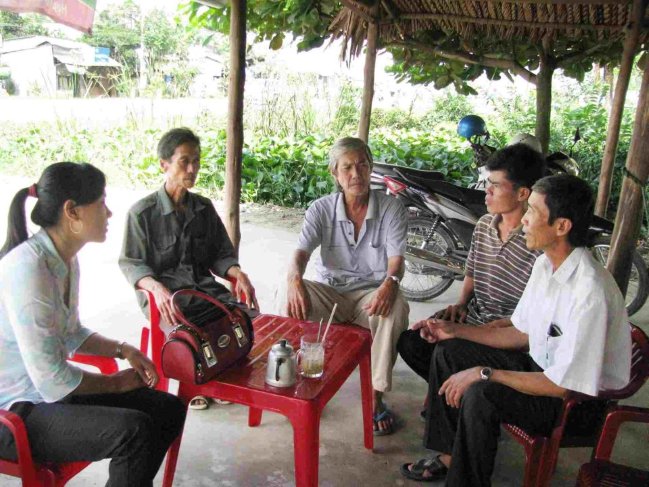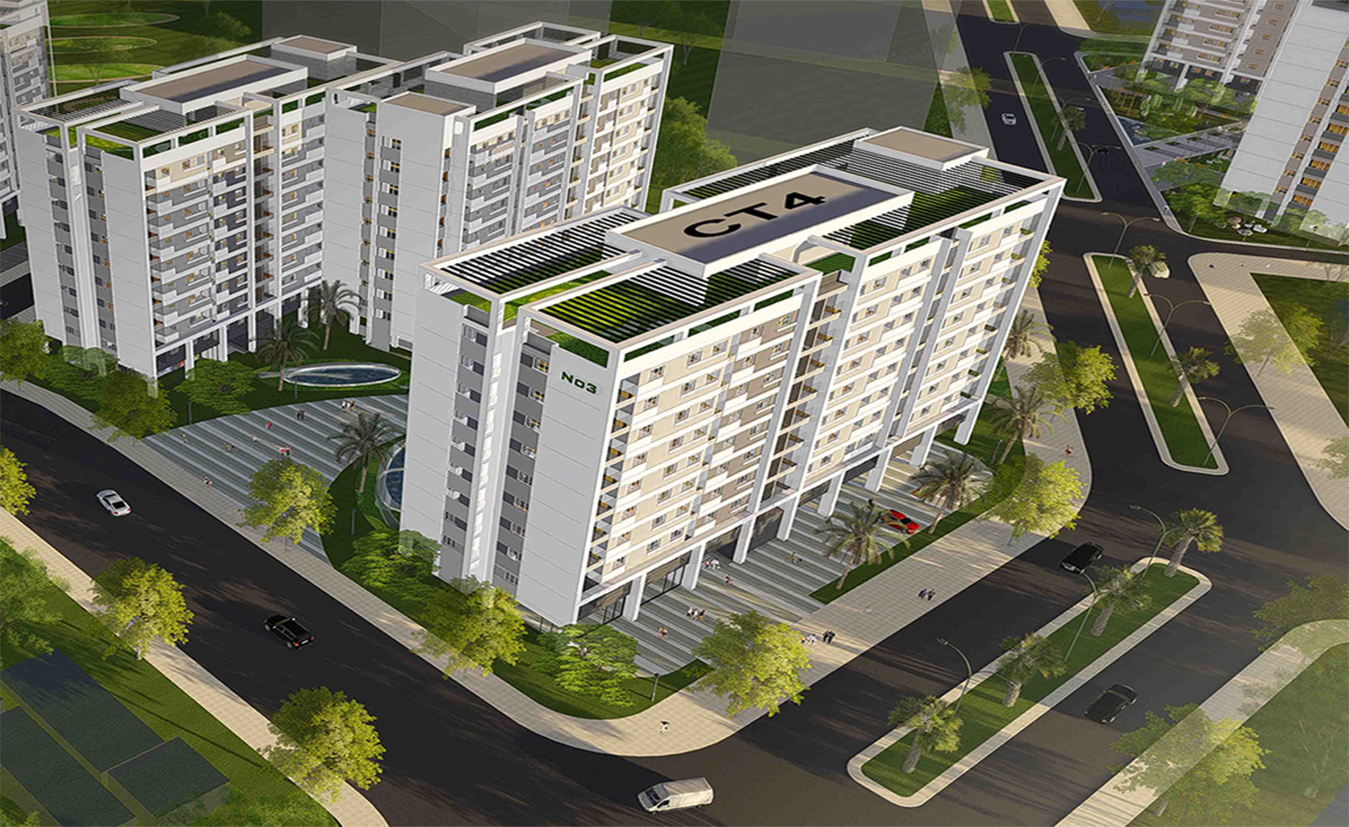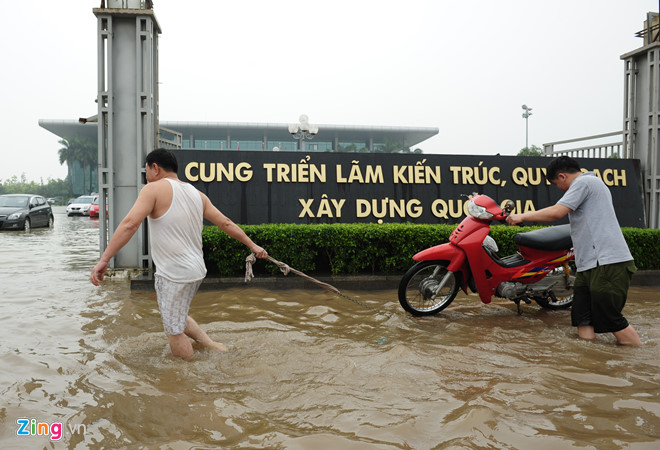In recent years, mediation work at the grassroots level in Dak Lak province has achieved encouraging results as more and more disputes and conflicts have been successfully mediated. The team of mediators has been consolidated, strengthened, and their mediation skills and capabilities have been enhanced.
However, when conducting reconciliation work, it is necessary to differentiate clearly between grassroots reconciliation and reconciliation in land dispute resolution, as these two concepts, although similar in meaning and purpose, differ in essence, organization, activity, and procedures.
The similarity between grassroots reconciliation and reconciliation in land dispute resolution is that both types aim to resolve disputes and conflicts between two or more parties by having the parties negotiate and settle with each other with the participation of a third party (not a disputing party). However, these two concepts differ in essence, organization, activity, and procedures.

Regarding Applicable Legal Documents
Grassroots reconciliation activities are governed by the Law on Grassroots Reconciliation 2013 and guiding documents, such as: Decree 15/2014/ND-CP dated February 27, 2014, of the Government of Vietnam detailing a number of provisions and measures for implementing the Law on Grassroots Reconciliation; Joint Resolution 01/2014/NQLT/CP-UbtummttQVN dated November 18, 2014, between the Government of Vietnam and the Central Committee of the Vietnam Fatherland Front on guiding the coordination in implementing some provisions of the law on grassroots reconciliation...
Reconciliation activities in resolving land disputes are governed by the Land Law 2013 and guiding documents, such as Decree 43/2014/ND-CP dated May 15, 2014, of the Government of Vietnam detailing the implementation of a number of provisions of the Land Law...
Regarding Reconciliation Scope
For grassroots reconciliation activities: According to Article 5 of Decree 15/2014/ND-CP dated February 27, 2014, of the Government of Vietnam detailing a number of provisions and measures for implementing the Law on Grassroots Reconciliation, the scope of grassroots reconciliation includes: conflicts between parties (due to differences in life perceptions, lifestyles, incompatible personalities, or conflicts in the use of passageways through houses, communal passageways, use of electrical, water supplies, auxiliary works, living hours, causing general unsanitariness, or other reasons); disputes arising from civil relations such as disputes over ownership, civil obligations, civil contracts, inheritance, land use rights; disputes arising from marriage and family relations; legal violations that, according to law, are not serious enough to warrant criminal prosecution or administrative penalties; and certain criminal law violations as prescribed...
For reconciliation activities in resolving land disputes: The scope of reconciliation for this activity includes land disputes that the parties cannot reconcile on their own.
Regarding Nature
Grassroots reconciliation activities are a method of organizing to resolve conflicts and disputes based on encouraging and persuading the parties to voluntarily agree with each other to eliminate conflicts and disagreements, thereby achieving agreements that comply with the law and social ethics, contributing to building solidarity among the people, fostering good neighborliness, and maintaining political security, social order, and safety within the community.
Unlike grassroots reconciliation, reconciliation activities in resolving land disputes conducted by the commune-level People's Committee are a mandatory legal procedure. This can be considered a pre-litigation stage to resolve land disputes by the People's Courts or competent state administrative agencies.
Regarding Subjects Conducting Reconciliation
According to the Law on Grassroots Reconciliation 2013, grassroots reconciliation activities are conducted by mediators belonging to the reconciliation teams. The reconciliation team is a self-managed organization of the people established at the grassroots level (including hamlets, villages, clusters, hamlets, communes, neighborhoods, and other residential communities) to perform reconciliation activities. The organizational structure of the reconciliation team comprises the team leader and mediators; each reconciliation team has at least three mediators, including female mediators (for areas with many ethnic minorities, the reconciliation team must have mediators who are ethnic minorities). Mediators are elected from among those with good moral qualities, reputable within the residential community, capable of persuasion, and an understanding of the law. After electing mediators, the Head of the Front's Working Committee compiles a list and proposes to the Chairman of the commune-level People's Committee to issue a decision to recognize the mediators. The team leader is elected by the mediators from among the mediators to be responsible for the reconciliation team.
According to Article 88 of Decree 43/2014/ND-CP dated May 15, 2014, of the Government of Vietnam detailing the implementation of a number of provisions of the Land Law, the reconciliation activity in resolving land disputes is conducted by the Land Dispute Reconciliation Council. The composition of the Council includes: the Chairman or Vice Chairman of the commune-level People's Committee as the Chairman of the Council; representatives of the Vietnam Fatherland Front Committee at commune, ward, commune-level town levels; neighborhood leaders for urban areas; hamlet, cluster leaders for rural areas; representatives of some long-standing households in the commune, ward, commune-level town who are well aware of the origin and process of using the parcel; cadastral officers, judicial officers of the commune, ward, commune-level town. Depending on the specific case, representatives of the Farmers' Union, Women's Union, Veterans' Association, Ho Chi Minh Communist Youth Union may be invited.
Regarding Legal Consequences of Reconciliation
For grassroots reconciliation activities: If successfully reconciled, the parties can agree to set up a successful reconciliation document; if reconciliation fails, the parties have the right to request competent agencies or organizations to resolve according to the law.
For reconciliation activities in resolving land disputes: The result of the land dispute reconciliation must be documented. The reconciliation document must have the signatures of the Chairman of the Council, the disputing parties present at the reconciliation session, the members participating in the reconciliation, and must bear the seal of the commune-level People's Committee; it must be immediately sent to the disputing parties and kept at the commune-level People's Committee.
Therefore, it can be seen that, despite the similarities in purpose and meaning, grassroots reconciliation and reconciliation in resolving land disputes are two completely different activities in terms of nature and procedures. Therefore, based on each specific case or matter, it is necessary to determine which legal document to apply, the Law on Grassroots Reconciliation 2013 or the Land Law 2013, to resolve conformably, avoiding confusion in applying reconciliation teams for land dispute resolution or applying the Land Dispute Reconciliation Council for other matters within the scope of grassroots reconciliation.
Source: Baodaklak.vn
 Article table of contents
Article table of contents





.Medium.png)
.Medium.png)
.Medium.png)
.Medium.png)
